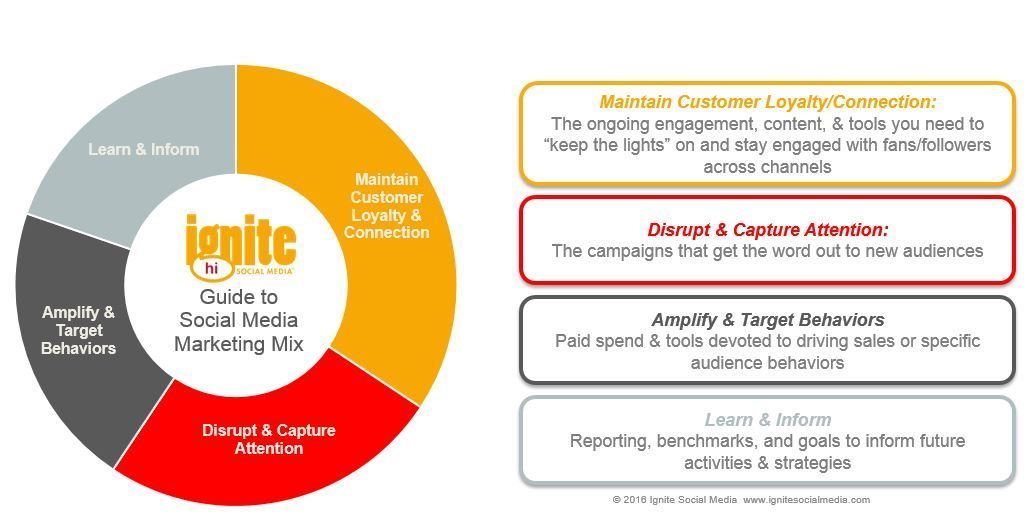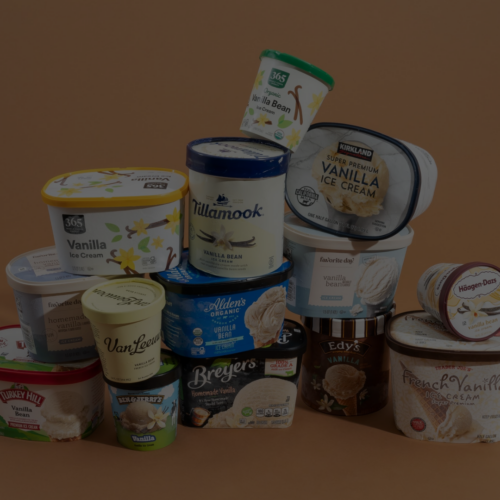
09 Jan Social Media Marketing Mix: A Guide to Inform Your Social Media Advertising Budget
At the start of a new year, many marketers are starting to develop or finalize budgets and plans for the year ahead. From a holistic marketing perspective, you may be deciding how much to allocate towards your social media marketing budget in the new year.
After working with a real client on this very exercise, I wanted to give you an inside glimpse of how we approached it.
Step 1: Evaluate Previous Budget
It’s helpful to begin by evaluating your overall budget spent from the previous year, grouping activities into larger roll-ups. This will help you see a snapshot of where the majority of your dollars went. The following are some specific questions to help you see where your dollars went:
- How much of your total budget went to tools?
- How much of your total budget went to media boosting?
- How much of your total budget went to content creation?
- How much of your total budget went to community management?
- How much of your total budget went to innovative campaigns?
From here, you will get an idea of the major activities that you allocated dollars towards. It’ll shed light on what percentages went to particular activities. In some cases, you may notice areas (for instance, tools), where you may be able to consolidate and drive efficiencies in the new year.
Step 2: Create Your Ideal Mix
After you’ve taken a look at your current breakdown, it’s time to zoom back and look at how you’d allocate given a hypothetical budget. If you think you may be asked to keep the budget flat year-over-year, you may plan using your previous year budget assuming a modest 5-10% increase. If you want to swing higher, now is the time to dream big. This is an important exercise because it helps you rise above what you are currently doing and consider what you may not be doing.
As a helpful guide, the below graphic looks at the large categories of budget line items included in a well-rounded social media marketing mix. As you can see, the majority of dollars for most brands falls within the “maintaining customer loyalty & connection” category. This includes all community management, content creation, and tools needed for publishing. This category is crucial as customers expect brands to be active, to answer customer support questions, and to be engaged.
Unfortunately, many brands put all the emphasis in this category and don’t carve out enough budget to disrupt and capture the attention of new audiences who may not be engaging with the brand on owned channels, or who may not even know the brand exists. This budget provides the flexibility and the ability for the brand to notice an opportunity and seize it. It must be treated as a high risk and high reward for the brand. It must encourage innovation, break-through ideas, and tactics that can cut through the clutter. What’s important is this: allocating budget to this line item ensures it will happen. Not allocating budget and assuming dollars will be there “if the idea is right” will likely leave you disappointed at the end of the year.
The next important category is paid amplification and targeting. Since many businesses and brands are trying to drive business objectives with social media marketing, paid media is going to need to help drive desired actions and activities from the target audience. With more ad units to choose from from ever before, it’s important to dedicate a specific budget to boost and drive these specific outcomes.
Finally, the “learn and inform” category are all the activities designed to understand and dictate future strategies and tactics. This includes reporting, goal setting, and strategic development or strategic recommendations. It’s important to ensure that your brand learns from what has worked and what hasn’t, and that you have a rhyme and reason to which activities the brand participates in. This is a worthwhile investment, and one that can save dollars over the long haul.
Step 3: Make Your Case
The next phase is making your case for your budget. We often find that presenting budget options in the high-level social media marketing mix format is an easier way for senior level executives to evaluate and see where a percentage of the dollars for social media marketing will be going.
In addition to these budget options, showcasing where the industry is headed is also helpful at making the case for budget increases. We’ll leave you with the following stats to showcase how much of your overall budget social media marketing activities should be, and how these budgets should be increasing year-over-year.
- Paid social advertising is also on the rise, with social network revenues predicted to increase by 23% in 2017, now accounting for roughly 21% of digital ad spending. This forecast also excludes the spending to maintain a social network presence.

Still need help developing how to build your budget? Send us a note. We can help you walk through this process and help recommend an appropriate social media marketing mix based on your objectives and where you want to take your brand in the new year. We’d be happy to help.








